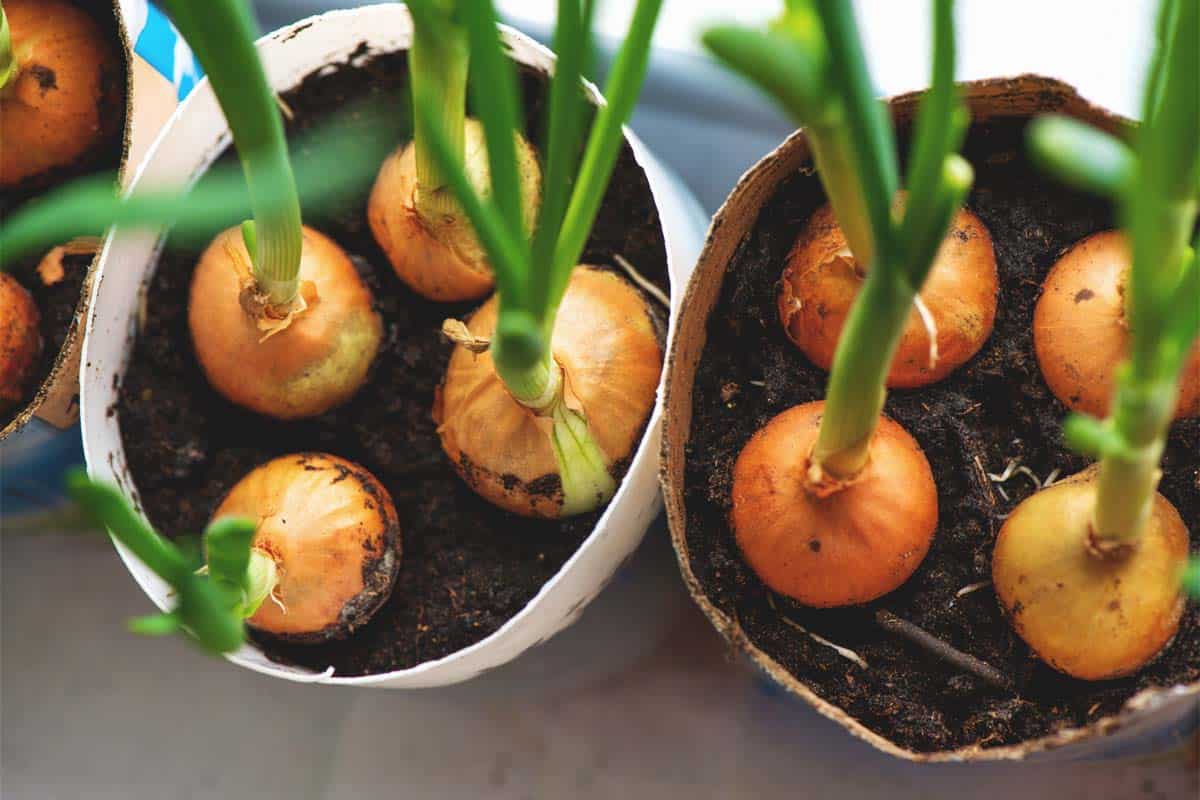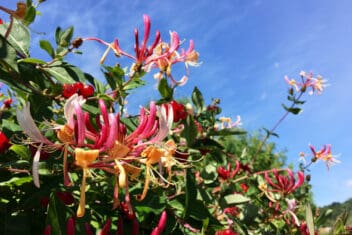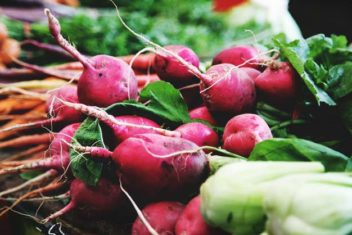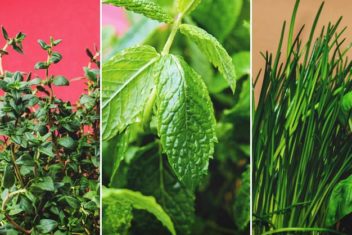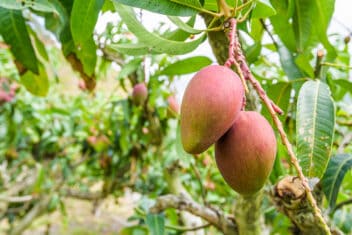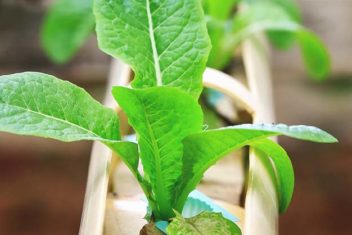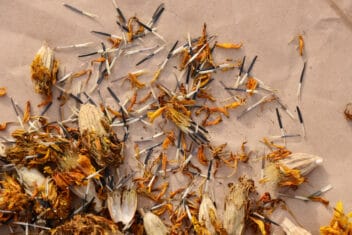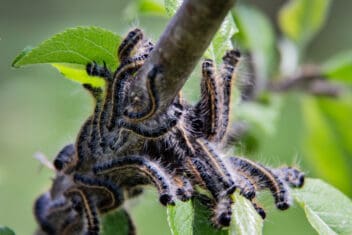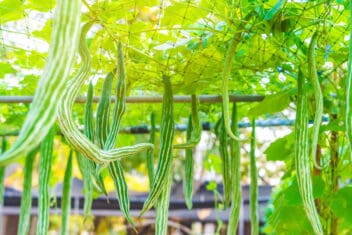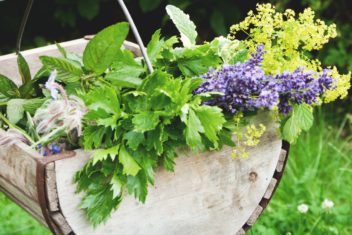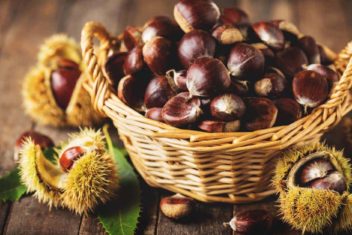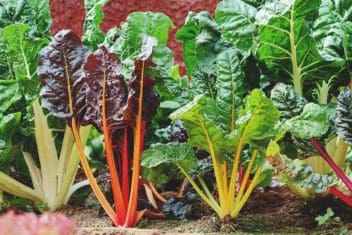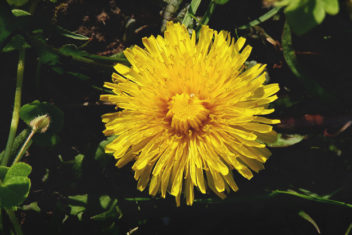There are a lot of useful herbs and spices that grow very well indoors. For example, in another article, Chives, Lemon Balm, Marjoram, Mint, Oregano, Parsley, Rosemary, Sage, Thyme, Basil, Cilantro, Bay, and Tarragon are mentioned.
These are outstanding classic culinary choices for their beauty and utility. They are also commonly grown indoors, so we know they’ll do fine in your house. That makes them a great place to start.
But if you are ready to expand your repertoire beyond these basics, then I want to share some secrets to help you decide which plants will and won’t grow well indoors. That way you can make your own list of what to try next in your indoor garden.
Finally, I want to leave you with a little inspiration. So, I’ve included a list of 11 useful homestead herbs and spices that I know can grow well indoors. I’ve also included some tips on how to grow and use them.
Let’s get started!
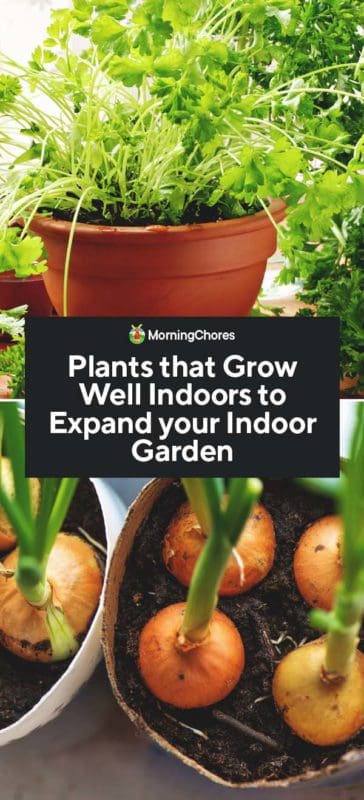
Criteria for Selecting Indoor Plants
Most of the plants we choose for indoor growing are selected because they have a tolerance for indirect light or part shade. We tend to avoid plants that only thrive in full sun.
Sunlight Requirements
Yet, if you are willing to install well-placed daylight rated light fixtures in your house to augment sunlight, you can even grow full sun plants indoors. Sunlight needs don’t have to be a limiting factor.
Using lights does increase your electricity bill. You also may want to put them on timers to make sure they turn off at dark and on at morning light for optimal plant health. Include those additional costs into your calculations before committing to full sun plants.
Temperature – Hot or Not?
The other big reason some plants are favored for indoor use is their temperature preferences. Plants that like temperatures below 65℉ don’t like living in our homes because we like our spaces warmer than that.
Plants that like temperatures hotter than 80℉ also don’t tend to be good for indoor use unless you also live in a hot house. However, keep in mind that there are tricks you can use to create warmer or cooler microclimates indoors.
For example, you can paint your full sun window ledge black to draw and absorb extra heat and warm the soil. You can use an electric heater for heat-loving tropicals. Or you can install a water feature or fan to cool an area.
If you don’t want to worry about microclimates, though, opt for plants that are comfortable in the light conditions you have and temperatures that are typical in your house.
Beyond those two requirements, there are a few other categories of plants that aren’t easy to grow indoors. Here they are.
Vernalization Required
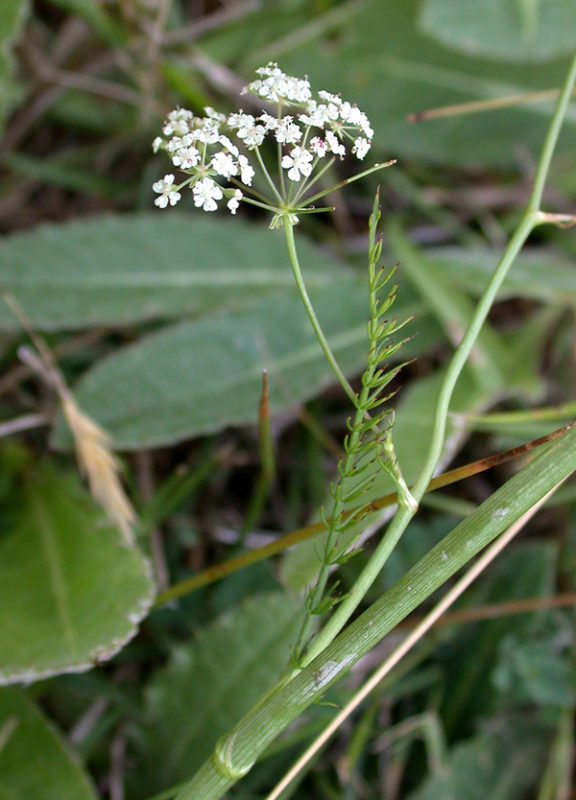
Plants that require a certain number of cold hours or chill hours to produce a crop aren’t easy indoor options. You’ll either have to refrigerate those plants at night or haul them outdoors during cool conditions to accumulate those cold hours.
Usually for vernalization temperatures need to be in the 38-45℉ range. Also, some plants that need vernalization aren’t cold-hardy. So, in some cases, you also have to protect plants from frost while vernalizing.
Here are some more detailed examples of plants that require vernalization.
– Perennials with Chill Hours
Lots of fruit trees and shrubs have chill hour requirements. Chill hours vary by plant. For example, apples and pears tend to require a lot of chill hours – usually in the 1200+ hour range. Olives also need upwards of 300+ chill hours, yet they also need protection from extended periods of cold too.
By contrast, citrus plants or tropical fruits don’t tend to need any vernalization for crop production.
– Biennial Plants Grown for Seeds
Many biennial plants, those that produce leaves the first year and seeds the second, need vernalization. For example, Caraway is easy to grow indoors in a pot. However, in order to produce seeds, you’ll need to give it a few weeks in cold conditions such as on a balcony in winter or in an outdoor garden.
Deep Pots for Rooted Plants
Plants with deep roots also require extra attention for indoor growing. Since they require deep pots and extra soil, they take up a lot of room. Those deep pots are also hard to move.
Taprooted and soil nutrient scavenging plants tend to have the deepest roots. For example, horseradish needs up to 2-3 square feet of soil room to produce large roots. But if you just want some spicy leafy greens, you can grow horseradish in a small pot similar to growing basil.
Day Length Dependent Plants
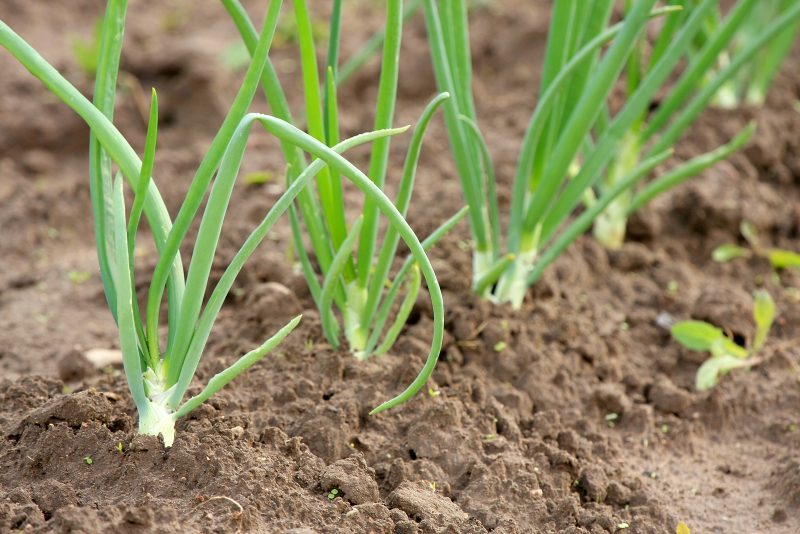
Another class of plants that can be hard to grow indoors are those that depend on day length to trigger stages of development. For example, bulbing onions are day length dependent.
– Bulb Onions
During the short days, onions grow leaves. Then, when day length gets longer, they begin to store nutrients in the bulbs.
To simulate this cycle indoors, you’d start by giving plants 10 hours of light per day until they have 13 mature leaves (the ideal number for big bulbs). Then, you’d increase to 15 hours of light to trick plants into making bulbs.
This can certainly be done inside. But it’s a whole lot easier to grow common chives, garlic chives, or bunching onions that grow well in regular light hours.
Soil Temperature Requirements
One final category to watch out for is soil temperature dependent plants. Since our homes tend to be roughly the same temperature year-round it can be hard for these plants to know when to grow.
For example, fall-blooming flowers can usually be triggered to bloom by both decreasing soil temperatures and decreasing daylight. Since it’s pretty tricky to get those conditions right in your home, those kinds of plants may not flower well indoors.
Now that you know which plants types to avoid if you want to make indoor growing easy, let’s look at a few exciting examples you can grow indoors.
Full to Part Sun Culinary Herbs
These plants grow best when placed directly in front of a sun-facing window.
1. Stevia
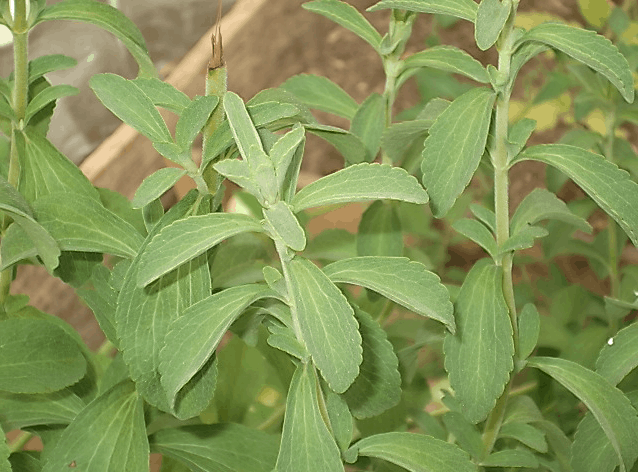
Stevia is a tender perennial that can also be easily grown as an annual. It’s often used to sweeten tea blends. It can also be steeped to make a kind of simple syrup.
My indoor plants in 1-gallon pots grow to about 2 feet tall but can be kept shorter with regular harvesting. The plant grows well the 1st and second year, but I usually replant after that as older plants seem more susceptible to indoor pests.
2. Leaf Celery
Leaf celery is not the same as stalk celery. It’s a more compact plant that can be repeat harvested for it’s hollow, flavorful stems. They also come in fun colors such as pink and lime green which makes it more interesting as a house plant.
I grow three plants together in a 1-gallon pot. Then I take turns harvesting so each plant gets a rest between cuttings.
3. Sweet Cicely
Sweet cicely is an old-world culinary herb that can be tricky to start. The seeds require lengthy stratification before they’ll break dormancy. The seeds also don’t store well, so you need to buy them from a trusted seed supplier to ensure good germination rates.
Once started though, this plant is easy to grow indoors or out. Similar to leaf fennel, the leaf fronds have licorice-like sweetness that are lovely in salads. They can also be sautéed with other greens or fried in tempura batter as a delicious herb appetizer.
This plant also needs a 1-gallon pot, or slightly larger. Plus, it can get tall if you don’t harvest the leaves regularly. But it’s so delicious, that usually isn’t an issue!
4. Lemongrass
Lemongrass also grows great indoors. Its growth is a bit slow if you keep your house on the cooler side. But you can increase the heat by putting it on a black ledge or in a black pot next to your sunniest window.
The plant will be more productive if you give it a larger pot. I usually aim for something in the 2-gallon size for good root development.
5. Ginger

You can grow ginger indoors. In fact, it’s pretty easy to do. But if you want meaningful quantities, you need to grow it in large pots. However, ginger can also be harvested like lemongrass for its above-ground stalks.
If you aren’t trying to grow it for fat rhizomes, you can get good leaf production even in a 1-gallon pot. The cut stems will regrow similar to onion tops. So, you can keep harvesting them. Also similar to lemongrass, you’ll get faster production if you put them on a black surface or dark pot to keep the soil extra warm.
6. Tulsi/Holy Basil
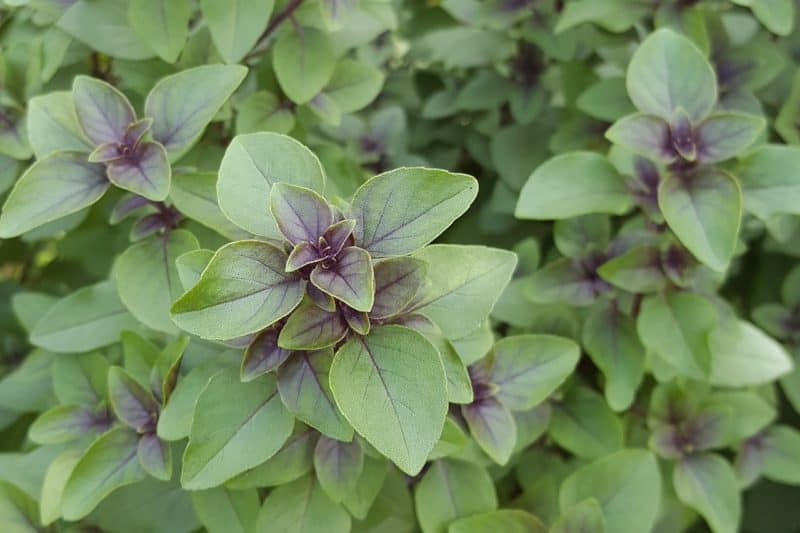
Tulsi, also called Holy Basil, grows great indoors. In full sun and high-heat, it can be really quick to flower. But when grown in filtered window light in a climate-controlled house, leaf development continues a lot longer.
If you pinch the growing tips to create branching, the plant gets quite bushy. Indoors, with just a few plants, you can grow enough to have a regular supply of freshly harvested leaves for caffeine-free chai-style tea.
It doesn’t need a lot of root space so you can even pack four plants into a 12-inch pot for beautiful impact.
7. Kaffir Lime
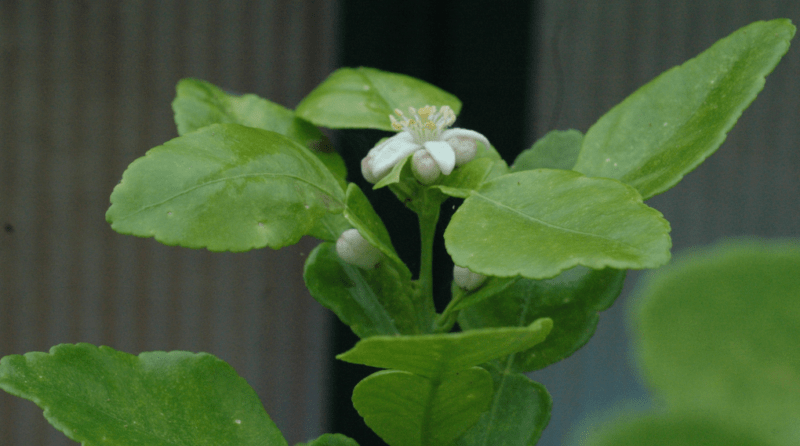
Kaffir lime leaves are a key ingredient in many beloved Thai dishes. The fruit is technically edible too. But most people stick to using the leaves in curries, soups, or meat dishes.
Like other citrus, you can keep kaffir limes indoors in bright sun. In a container, it stays compact. Also, because you want to harvest the leaves, you can grow this more like a shrub than a tree.
Part Shade or Indirect Light
These plants don’t require the same bright sunlight as the plants in the previous section. But you’ll still want to make sure they get sufficient indirect or afternoon sun for good growth.
8. Culantro
Culantro is similar in taste to cilantro. But because it’s biennial it doesn’t bolt or turn bitter as easily as cilantro does. When growing indoors, grow this as an annual for its leafy greens.
It does like warmer conditions. So keep this plant away from air conditioner vents or cold parts of your house. You can grow a few of these plants together in a window box sized planter to have a regular harvest.
9. Vanilla
Vanilla is a vining orchid that can be easily grown in a container indoors. You will need to give it a lot of room to grow both up and down a trellis. You’ll also need to give it a little extra humidity to keep it happy.
Finally, you need patience and good pollination techniques. Vanilla takes several years to flower and nearly a year for the fruits to mature. Plus, you’ll need to hand-pollinate each flower daily during the bloom period.
But if you are willing to put in that little bit of work, you’ll have your own homestead supply of vanilla beans for the next 40+ years!
10. Shiso/Perilla
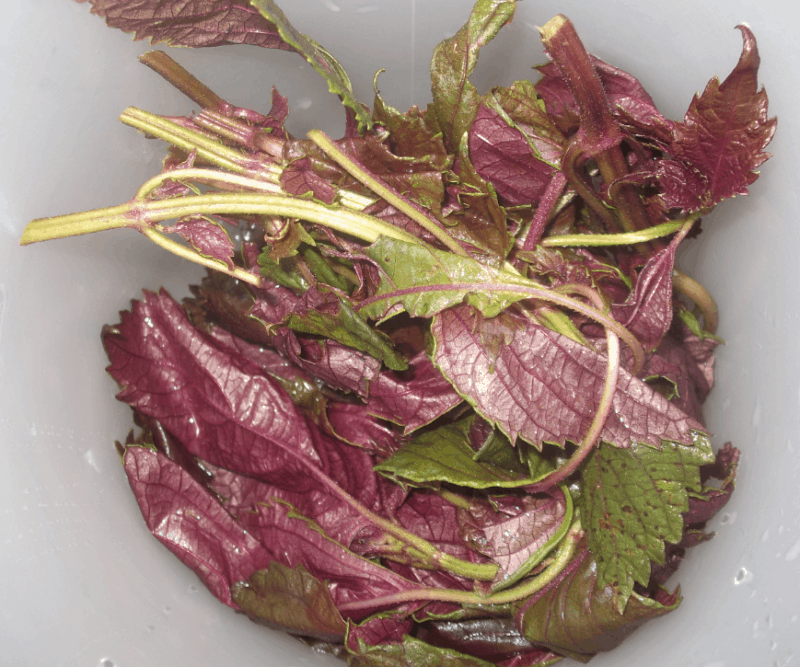
Shiso, also called perilla, is a plant in the mint family frequently used in Asian cooking. You can plant red or green varieties. The red is my favorite because they are really more like a deep, purple burgundy that add interest to salads, ferments, and stir-fries.
My absolute favorite use for shiso, though, is in homemade cordials. It colors the liquor beautifully and adds unique camphor, anise, tangy, and sweet flavor to the mix.
Grow three plants in a 1-gallon pot for impact. You can grow these in full sun. But the color is richer and the flavor more intense if they are grown with indirect light.
Useful Non-Edibles
There are a few herbs you can grow indoors that have great homestead utility, even though you can’t eat them.
11. Patchouli
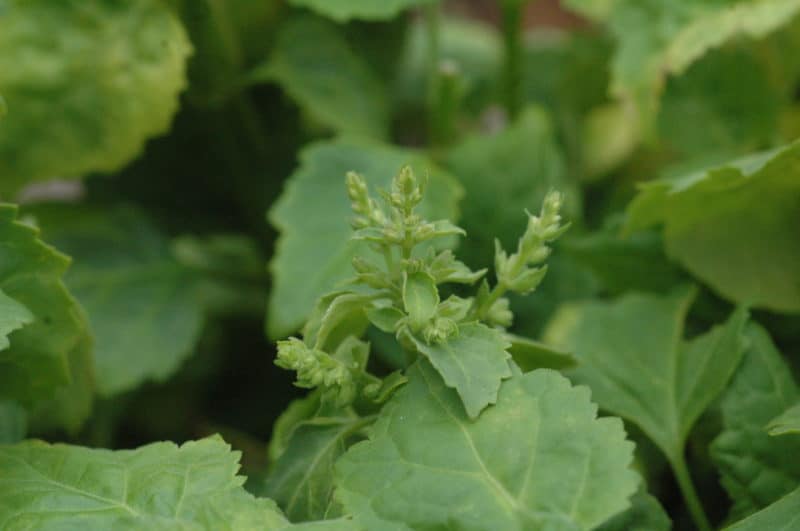
Patchouli is a fragrant plant grown for its essential oils. You can harvest the leaves to use in potpourri mixes. Or, you can rub the leaves right on your skin for a natural perfume. You can also burn the leaves, like sage smudging, to aromatize your house.
It likes bright sun and at least a 1-gallon pot. Similar to other plants in the mint family, you’ll want to harvest by pinching the tips often to keep the plant from becoming leggy indoors.
Older plant leaves do sometimes grow a bit jaundiced when indoors. But this doesn’t seem to affect plant health as long as you keep on harvesting the old leaves so young green leaves can see the light.
12. Shampoo Ginger
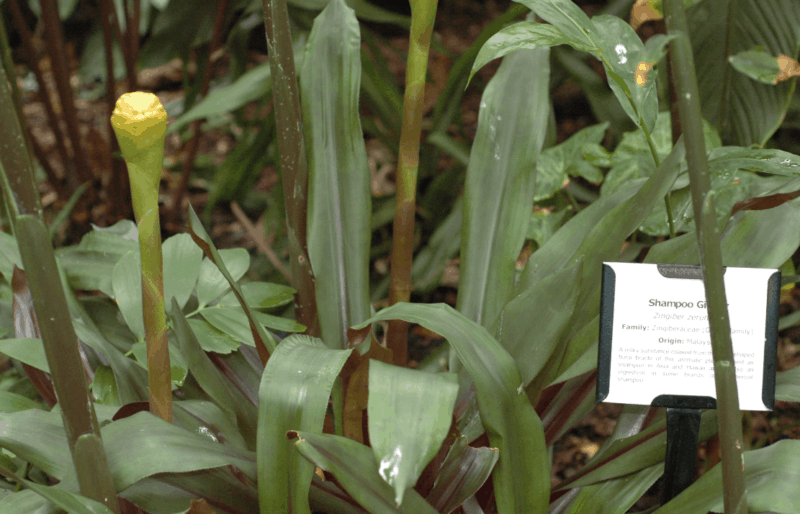
I had never heard of Shampoo ginger until I visited the Aviary at the North Carolina Zoo. But this tropical plant was growing like a champ in the shade of a much larger tree, so I knew it would make a great indoor option for indirect light conditions.
It’s dormant from fall to spring. But in late spring it grows fragrant leaves that are so aromatic they are used in underground cooking, such as traditional imu style pork. In summer it has cone-like fragrant flowers that are used in homemade shampoo/conditioner mix.
This member of the ginger family is also called bitter ginger. So while it is edible it’s more often used for aroma not flavor.
13. Soapwart
When grown outdoors, this beautiful plant is sometimes considered invasive weed. When you grow it indoors, though, it’s natural exuberance for spreading is tempered by the size of its pot and the less than ideal light conditions.
Because its leaves are loaded with saponins, the stuff that makes soap suds, you can tear off a few leaves as needed and use them for washing your hands. Or you can harvest larger amounts and make your own homemade liquid soap by extracting the saponins from the leaves.
Indoor Plant Care
Caring for plants that grow well indoors is slightly different than caring for outdoor plants. Because they don’t have access to broad swaths of soil, you must fertilize them properly. Also, since it doesn’t rain in your house, regular watering is required.
Pots need to be turned regularly so that indoor plants get to feel the sun in equal measure on all sides. You also need to be aware of light changes throughout the year. For example, a sunny window in summer may be a shaded spot in winter due to the angle of your roof.
Finally, plants need to experience darkness for good health also. If you time your indoor plant lighting to what the world outside is doing, your plants will rest better and live longer.
Expand Your Indoor Garden

Now you are ready to get started growing these 13 edible and useful plants that grow well indoors. Or, more importantly, you can make a list of your favorite plants and decide if they have what it takes to grow well in your indoor garden. May your home be a beautiful garden indoors and out!
